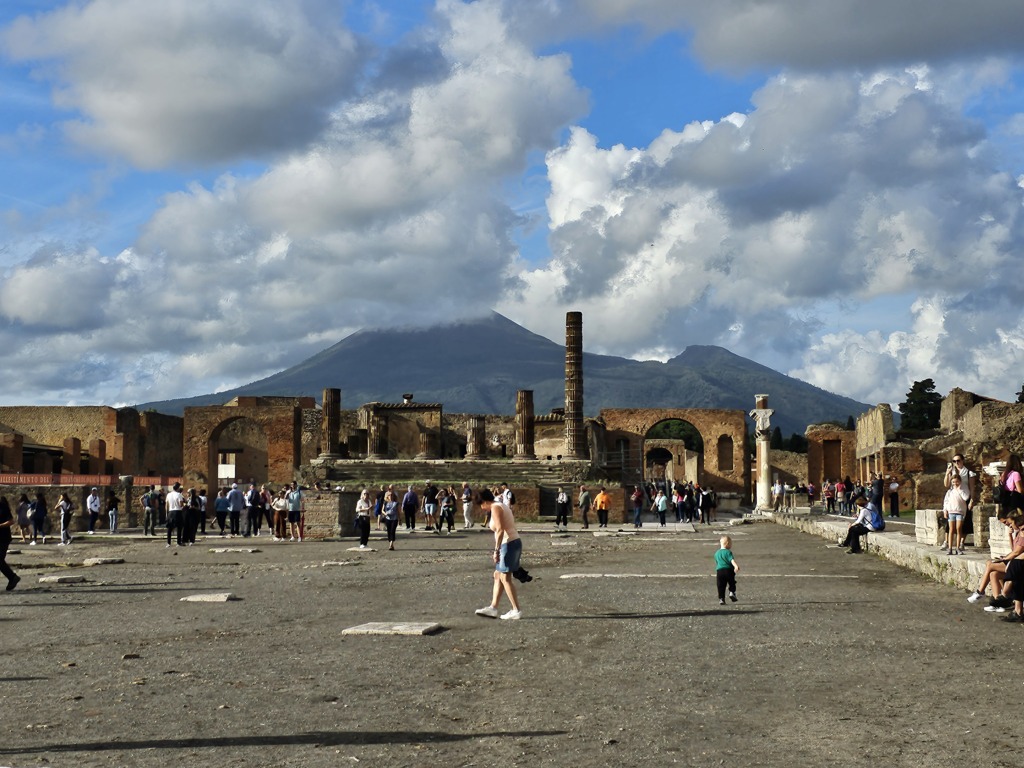Peering into the crater of an active volcano would normally be the highlight of any trip, except when your five day school tour of Italy also includes Pompeii, Herculaneum, Naples and Rome!
Dr Duffy, Head of Humanities at Manor House School, set off from Heathrow Airport for Rome in late October 2023 with a number of his Classics and Latin GCSE pupils, excited for the opportunity to bring their studies alive.
BAY OF NAPLES
Until their arrival in Italy, lessons in GCSE Classics had been mostly classroom based but stepping into Villa Oplontis immediately turned 2D into 3D. A lesser-known casualty of the Mount Vesuvius eruption of AD79, the large residence lies below the modern day suburb of Naples of Torre Annunziata, a few minutes train ride away from Pompeii. The villa is believed to have been the home of Emperor Nero’s second wife, Augusta Sabina Poppaea – before she met her early death in 65 A.D. at the Emperor’s hand. Many of its ornate and brightly coloured frescoes are still visible thanks to their preservation under volcanic ash until the villa’s gradual discovery over the last four centuries.
Pupils found themselves shocked by the indiscriminate nature of the destruction. How could this grand building have met the same fate as the more ordinary dwellings nearby? Mount Vesuvius was rather democratic with its choice of victims. In the Bay of Naples, pupils also visited the sites of Pompeii and Herculaneum, walking down streets frozen in time, in and out of ancient long-deserted cafés and peering into abandoned houses, connecting with human stories of the past.
ROME
With only two days in Rome, difficult choices needed to be made. After visiting the ancient Roman port town of Ostia Antica on the first day the schedule included the Trevi Fountain, the Colosseum, the Pantheon, the Forum of Augustus, Ara Pacis (Altar of Peace) and the Circus Maximus. Other sites were fortuitous finds including Roman tenement blocks, spotted from the side of the road as the group was making its way to the Capitoline Museum.
Peering down from the edge of the dual carriageway, narrow alleyways were revealed between tightly packed ancient apartment buildings up to six storeys high, with little or no daylight reaching ground level. Likely inhabited until around 400AD, these “insulae” were home to the real people of Rome. It is easy to think of this ancient city with its low-lying opulent villas and grand monuments but here the pupils were given a window into how ordinary Romans lived.
On a more practical note, waking pupils up proved increasingly challenging. With the days packed with so many activities, Miss Van Dyk found herself resorting to making bird noises at pupils’ hotel room doors to coax them out of bed and prompt them to investigate!
BACK IN SURREY
Reflecting on the trip, Dr Duffy remembers his pupils’ enthusiasm and their respectful behaviour towards the adults they came into contact with – behaviour that was praised by several of the travel guides who interacted with the group.
Back in the classroom, there has been a palpable shift, with pupils engaging more actively with materials during classes. Dr Duffy has also noted a tangible increase in their retention of information. “When you’re reading about someone’s life 2000 years ago from a book, it doesn’t feel real, but if you’ve been inside their house, seen where they ate and where they slept, you can relate better, it all comes alive”.







